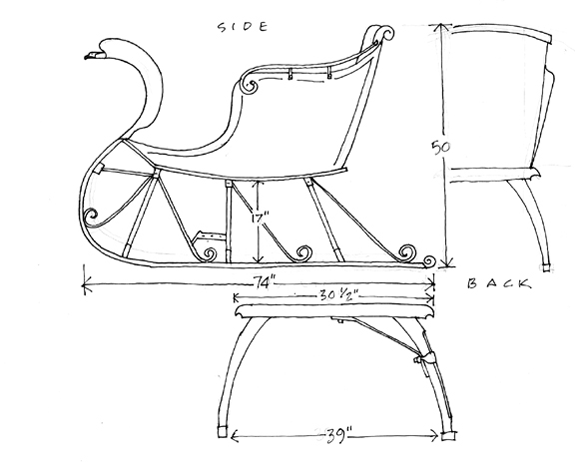My first Portland Cutter was on my garage floor but in pieces like a puzzle. Earlier that day, when I first laid eyes on what could be called a pile of sticks and iron in Max Wilson’s barn, the project looked fairly intimidating. All of the iron work was there though and more importantly in good shape, the iron strut design matched a good friend’s Janesville Cutter exactly! I therefore had a complete and original sleigh to use as a pattern and I could simply match all the wooden parts I would have to cut and build.
|
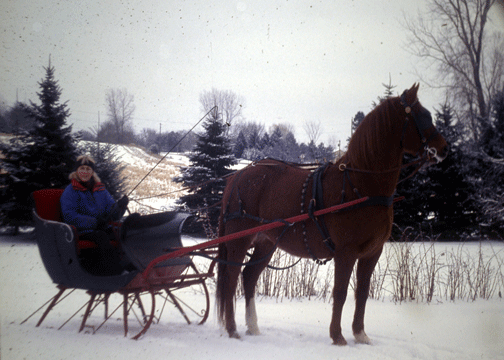
Karin Winegar driving her Grandmother's original Janesville cutter, pulled by Karin's Morgan, Wheatie.
|
With a handful of clamps, I assembled what sticks and iron pieces I had on the garage floor and took a first look at what was to be my Portland Cutter (Figure 1).
|
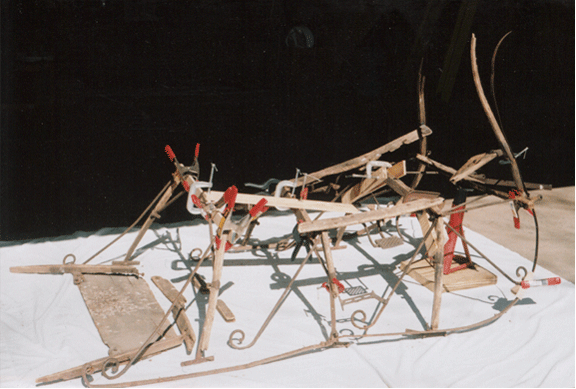 Figure 1
Figure 1 |
The first thing I did was to consult with my friend Kenn Kopitzke about resources and tips for building a cutter. Kenn is a veritable encyclopedia of carriage and sleigh building information. I started taking measurements of my friend, Karin’s Portland Cutter and did several drawings to guide me through all the woodworking (Figure 2). Incidentally Karin’s sleigh was given to her by her grandmother. It is a Janesville Cutter built around the turn of the 20th Century.
|
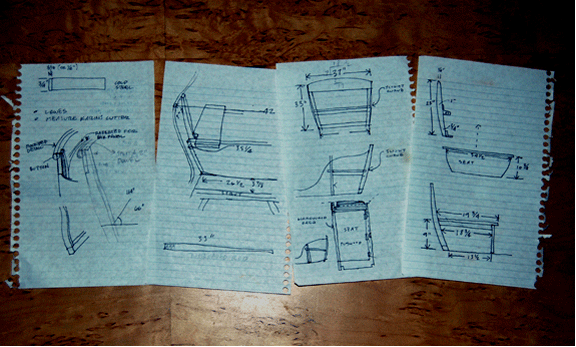 Figure 2
Figure 2 |
My first task was bending the runners so I contacted Steve Wadell of Chamberlain Hill Carriage Works, who has been making and restoring carriages, making wheels and bending sleigh runners for years, and he offered to sell me a set of runners that would match my cardboard pattern. But even better, he told me, I could help him steam and bend them. It’s better to have four hands bending and clamping than two because you have to work fast from the time the thin hickory comes out of the steamer and the time it cools off is a matter of minutes. I spent a day as Steve’s “apprentice” and we steamed and bent a whole bunch of runners for cutters and bobsleds.
After returning home with my prized “S” shaped runners I was really motivated to start putting together the undercarriage. I purchased a mortise and tennon jig for my drill press and found a source for oak and hickory at Elmo Lumber, (which is now out of business,) and began tracing the knees and benches from my friend Karin’s cutter. The knees were shaped with a router to round over their outside edges and the tops of the runners were shaped to a slight round-over by hand (Figure 3A). The dashboard was formed from two 1/8” sheets of bendable plywood laminated and nailed to the bottom of the upper runners, then the sills were bent from two 1/4” x 4” oak boards and screwed to the tops of the benches (Figure 3B).
|
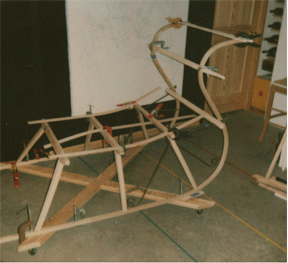 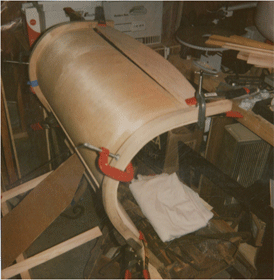
Figure 3 A and B
|
After I’d affixed the dash to the runners, I then created two jigs to form the wings on the outboard sides of the dash. I laminated two 1/8” sheets of bendable plywood to each form, roughly cut to size only, and glued them together over the forms. I had made a pattern from Karin’s sleigh wings and then trimmed the laminated wood to match her wings while on the jig. When the glue was dried, I nailed them to the edges of the runners being careful to get the angle of the wings correct (Figure 4).
|
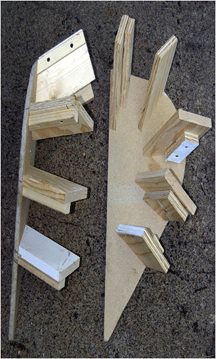 Figure 4A
Figure 4A |
Figure 4
Side view and top view of the forms in the image to the left (4A) and a picture of the forms as to how they relate to the sleigh runners in the image to the right (4B). |
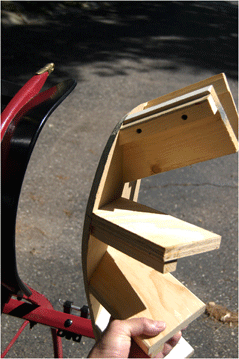
Figure 4B
|
|
The easiest part of building the cutter was putting together the coach or body, since the parts are essentially slabs of 3/8” good quality plywood, though I suspect that the craftsmen of the early 1900’s had access to wide poplar boards that were milled to about a 5/16” to 3/8” in thickness. Once again I went to Karin’s cutter, this time with large sheets of cardboard, and traced my patterns from her cutter’s sides (Figure 5).
|
|
Figure 5
With these rough sketches as a general guide, I was able to layout the coach work from tracings of an actual cutter. |
Witmer’s catalog for sleigh and carriage parts supplied the caning for the decorative trim on the coach, and the two eagles’ heads and rein rail (Figure 6).
|
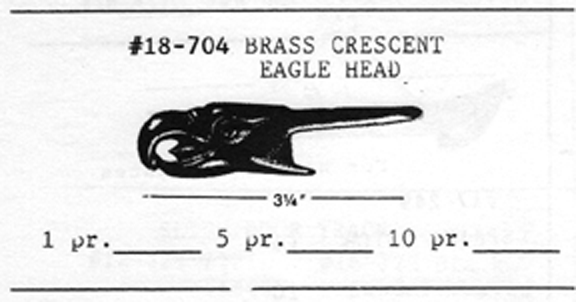
Figure 6
|
| I knew that the most difficult part of the body work was the paint. Kenn Kopitzke offered his advice at this point and I followed this order: First filling all the imperfections and nail holes in the wood with fiberglass filler and paste, then a coat of thick gray primer that Witmer’s sells, followed by several coats of Rust-Oleum Glossy Black. Kenn said that replicates the old paint formulas the best. Soon I had something that resembled a sleigh! |
The (nearly) Finished Portland Cutter!
Finishing details to the sleigh included ironing the runners, bending the armrests and upholsetering the seats, which Lyle and Marylene Jahns did quite beautifully (Figure 7). |
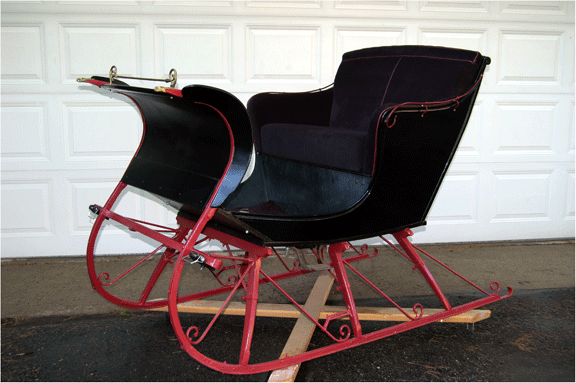
Figure 7
|
| I have tried to pinstripe the cutter body, but failed, so I think I will leave that to a professional, Karen Hanke, who professionally pinstripes vehicles. Stay tuned for photographs in a forthcoming article. |








